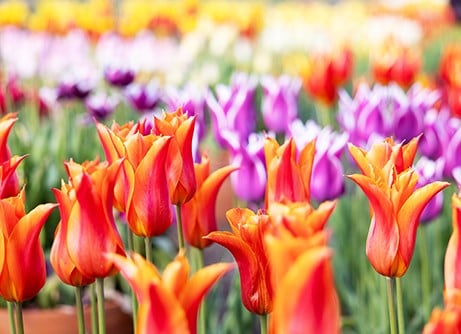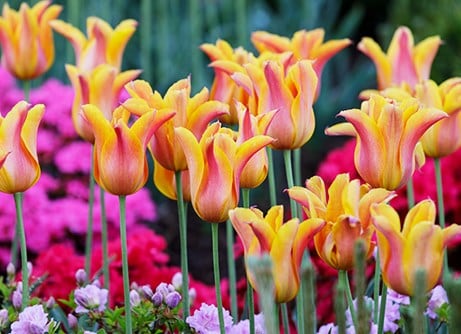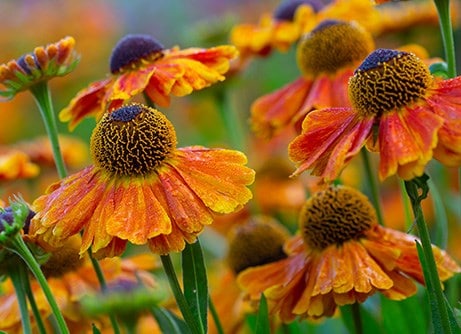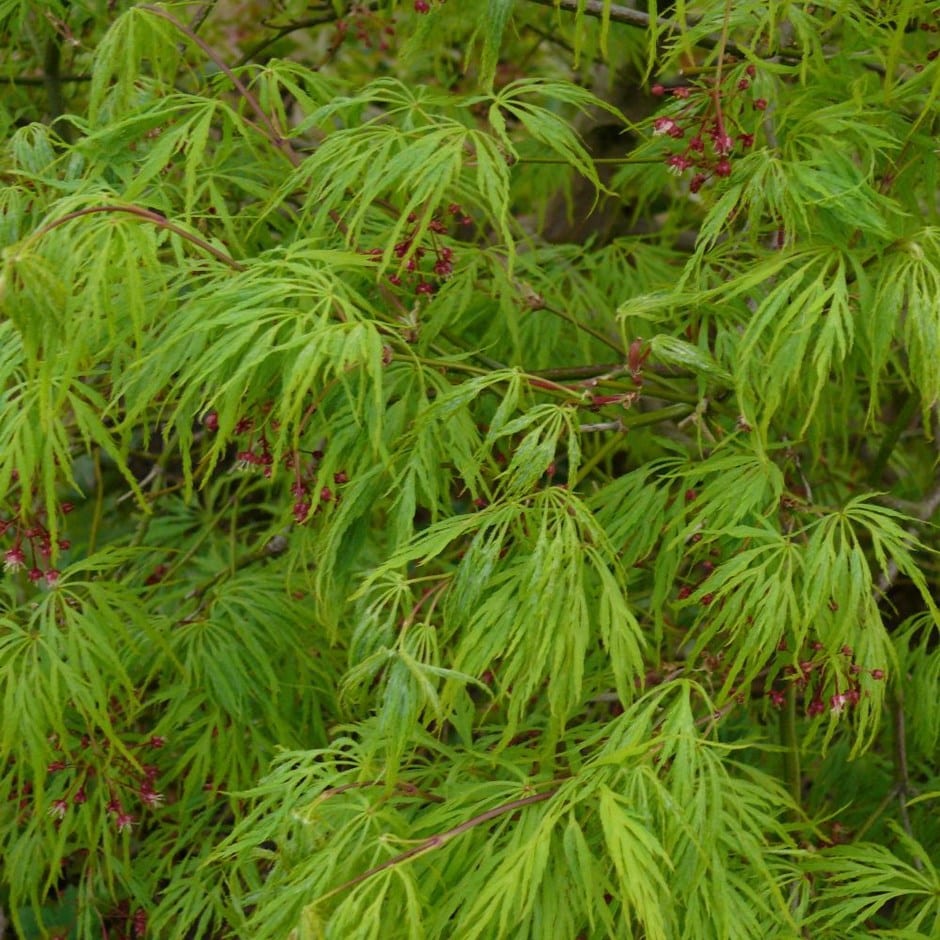Japanese maples thrive in sheltered positions with dappled shade, though many cultivars can tolerate full sun if given enough moisture. In exposed areas, protect young trees from strong winds, which can dry out and damage delicate foliage.
Plant in well-drained, acidic to neutral soil that is rich in organic matter, avoiding waterlogged or chalky conditions. When planting, ensure the root ball sits at the same level as it was in its nursery container, and water thoroughly to help establish strong roots. A layer of mulch, such as leaf mould or bark, will help retain moisture and suppress weeds but keep it clear of the trunk to prevent rot.
During dry spells, water young trees regularly, especially in their first few years. Even mature Japanese maples benefit from deep watering in hot weather to prevent leaf scorch.
A top-dressing of a multi-purpose fertiliser in late spring supports healthy growth, but avoid excessive feeding, as too much nitrogen can lead to soft, leggy growth that is more susceptible to damage.
These trees require little routine pruning. Simply remove any dead, damaged, or crossing branches in late autumn or winter while the tree is dormant. Avoid heavy pruning, as Japanese maples have a naturally graceful form that is best left unspoiled. If shaping is necessary, make minor adjustments in midsummer to minimise sap bleeding.
Container-grown specimens need extra care, including more frequent watering and, if not going up in pot size, occasional root pruning (late winter to early spring) to prevent becoming pot-bound. Mix ericaceous compost into the soil when planting, or add to loam based compost if planting in containers.










